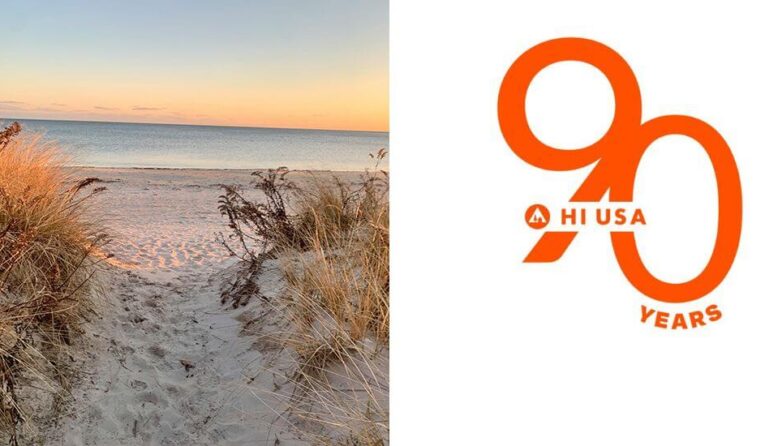In a Nutshell
To celebrate HI USA’s 90th year, we’re looking back at the rich history of three hostels that make Cape Cod and Martha’s Vineyard accessible to all travelers. From the HI Martha’s Vineyard Hostel—the first purpose-built hostel in the U.S.—to the HI Truro Hostel, a former Coast Guard station with million-dollar views, and the HI Hyannis Hostel, the historic home of a local legend, these hostels are a testament to the legacy of everyday people who wanted to share the Cape and Islands with everyone.
________________________________________________________________________________________________________________
At 90 years old, HI USA can look back and say it’s made a home for all travelers in some pretty spectacular places. But of all our hostel locations across the country – the big cities, the small parks, the repurposed mansions – a lot of people are most surprised to hear about the ones on Cape Cod and Martha’s Vineyard. The region can have an air of exclusivity, like it’s more of a summer retreat for the rich and famous than a network of communities where everyday people actually live and vacation.
But in fact, it’s the legacy of some of those everyday Cape Codders and Islanders that the Cape and Vineyard are accessible to regular, budget-conscious travelers today.
In celebration of the 90th year of hostelling in the U.S., we’re looking back at the history of three hostels that, to this day, make those New England summer escapes possible for budget travelers from around the world.
HI Martha’s Vineyard Hostel

Also known as the Lillian Manter Memorial hostel, this was the first and only hostel on the island when the Manter family opened it in 1955. Lillian and Daniel Manter actually constructed the building specifically for use as a hostel – an unusual move at a time when hostels around the country (and the world) mostly made use of old homes, schools, and other existing buildings. Now, it’s the oldest purpose-built hostel in the U.S. to still serve as one today.
In the 1940s (not long after the founding of hostelling in the U.S.), Lillian had begun to operate a hostel out of a local schoolhouse, and later out of military housing at the island’s small airport. After WWII, her husband Daniel, who worked in the construction business, worked with neighbors and other community members to build what’s now HI Martha’s Vineyard Hostel. The Manters raised the money for the project themselves, and even donated their own land, opening the hostel’s doors to travelers in 1955. Hostellers could get a bed in exchange for about 50 cents a night and help with hostel chores, with Lillian running the show as “house parent.”
A former guest named Tom Thatcher purchased the hostel in the 1960s – he’d arrived on the island not long after the Manters opened with “nothing but a bike and a backpack,” according to a 2005 account, falling in love with the Vineyard and the hostel itself. Thatcher owned and ran the hostel for 15 years as an affiliate of HI USA, hosting hundreds of travelers both returning and new. In 1963, the hostel even hosted singer-songwriter Arlo Guthrie. His friends Ray and Alice Brock were the hostel house parents that summer; a few years later Guthrie would immortalize them in the song “Alice’s Restaurant.”
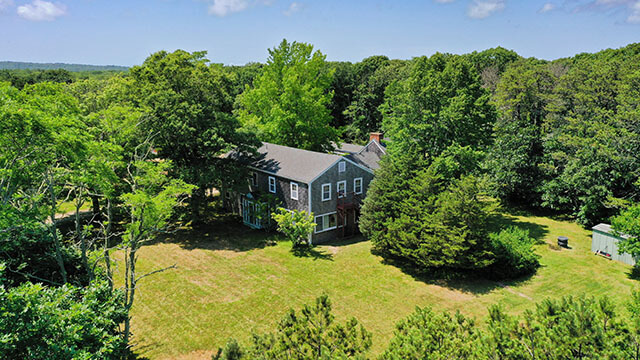
Thatcher turned the hostel over to HI USA, then known as American Youth Hostels, in 1984. In 1998, HI USA officially dedicated the hostel as the Lillian Manter Memorial Youth Hostel; you can still see the name above the hostel’s front door today.
All these years later, HI USA still welcomes travelers to that same place so special to the Manters, to Thatcher, and to countless others. In fact, after several additions to the original house, today the hostel’s able to cater to even more travelers not just from around the U.S., but around the world.
In 2005, at the 50th anniversary of the hostel, the Manters’ grandson told the local Vineyard Gazette newspaper how much it meant to see his grandmother’s vision carried on. “It’s good to know in a place people view as a playground for multimillionaires, there is still a place for every person,” he said.
HI Truro
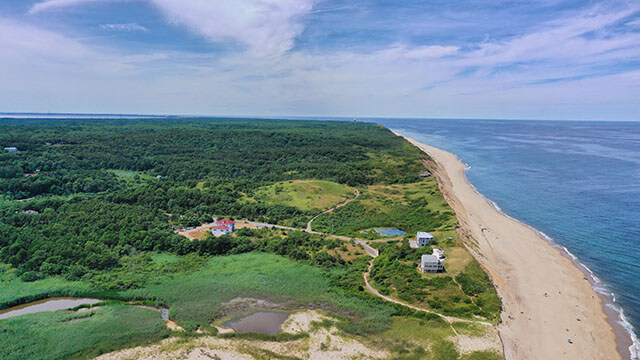
Anyone who’s familiar with HI Truro Hostel, perched on a hill overlooking pristine Ballston Beach on the Outer Cape, has at some point asked themselves the same question: with how little it costs to stay at HI Truro, how on earth can the hostel offer such a prime location and literal million-dollar views? Thank the United States Coast Guard, the National Parks Service, and the dedicated team at HI USA’s former Eastern New England Council (ENEC).
The building that now houses HI Truro hostel was originally constructed as an early life-saving station by the Coast Guard in 1933. When President John F. Kennedy established the Cape Cod National Seashore in the early 1960s, the former Coast Guard station was one of the first buildings acquired by the National Park Service. In an early partnership with the NPS, HI USA began running a hostel out of the building in 1967 under the name “Little America Youth Hostel.”
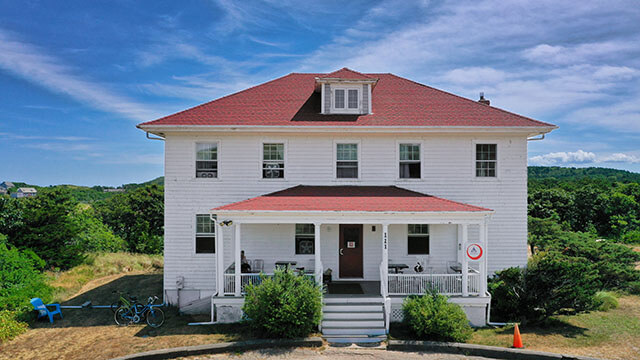
The hostel became particularly popular with cyclists, who would arrive at its off-the-beaten-path location and explore the area by bike (in the proud tradition of the hostelling movement).
Deborah Ruhe, the former Executive Director of ENEC, still marvels at the strong ties that cyclists and repeat visitors have to the hostel. She recalls being a passenger one summer about 15 years ago on the ferry from Provincetown to Boston and noticing two women in their 60s on board with their bicycles. Ruhe approached them and asked if they’d been visiting the Outer Cape for the weekend.
“They said, ‘oh, yeah,’ and then told me they’d stayed at, and been staying at, the Truro hostel since they were teenagers,” Ruhe remembers. “And I bet those women might still be doing that!”
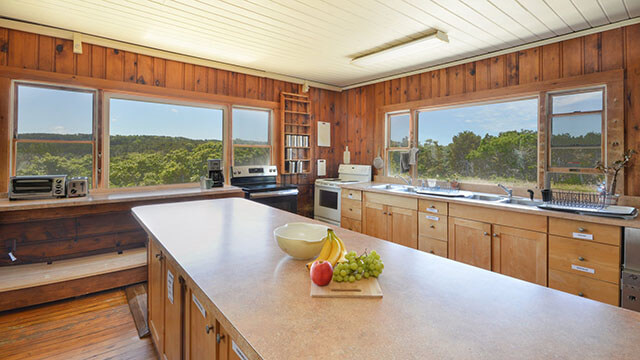
In 1972, a writer from the New York Times stopped by the hostel and described its “double-decker” bunks for 60 hostellers, kitchen with three stoves and four refrigerators, and dining room with “large picture windows (offering) views of salt marsh, dunes, and ocean.”
Throw in a few private rooms and some updated kitchen appliances, and the same description would hold true today. A stay at HI Truro hostel still feels like being let in on a secret hiding in plain sight.
HI Hyannis
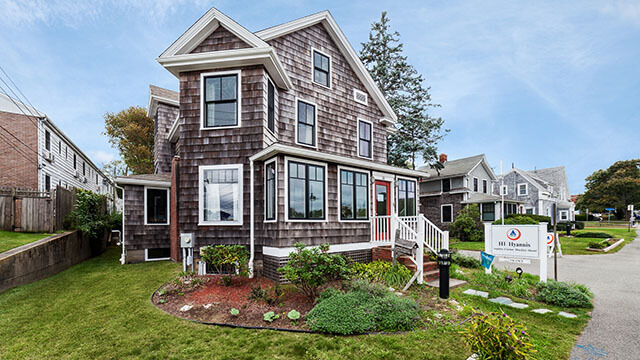
The “newest” HI USA hostel on the Cape is actually in the building that dates back the farthest! Built around 1910 from an original Sears Roebuck kit, HI Hyannis Hostel started out life as the home of the local Mullaney family. Their daughter, Ruth, was born in the house in 1910 and spent much of her life living there, developing a fascination and expertise with the local area that eventually made her famous in the community. A social worker, swimming instructor, school basketball coach, and volunteer with multiple local boards and institutions, she was known all over town as “just such a Cape Codder.”
In the late 1970s, at the age of 68, Ruth (who by then was Ruth Rusher) decided to take her role of Cape Cod ambassador to the next level. After years of watching boats of tourists enjoying their time out on the water right outside her front door, she realized she’d be the perfect tour guide for the region she loved. She applied for a job with Hy-Line cruises and spent the next 24 years entertaining and educating “wash ashores” (as she called anyone not originally from the Cape) from the aisles of tour buses. Always, according to a 2004 article in the Cape Cod Times, “with her yellow sou’wester fisherman’s hat and carrying shopping bags full of props, including shells and plants, for her animated show-and-tell-style talks about Cape Cod’s history and environment.”

Rusher died in 2004 but made sure to leave a legacy for Cape visitors behind, putting the waterfront home in which she’d grown up in a trust to be turned into a hostel.
“Her thing was tourism,” a friend told the Cape Cod Times in 2007. “She loved Cape Cod and it was her wish to make it possible for people to enjoy the Cape in reasonably priced accommodations.”
ENEC soon got involved and began fundraising, renovating the main house, and working with a local technical school to build two new buildings for on-site staff housing and visiting groups.

“That was a key way in which the hostel was not just for visitors, but served the area as an international touchpoint,” recalled John Yonce, a former HI USA staff member who was heavily involved with the fundraising and establishment of HI Hyannis. “The students who built (the new structures) got paid of course, but they were also exposed to the idea of travel on a global scale.”
The spruced-up and expanded hostel opened in the summer of 2011 in honor of Rusher’s mother, Angeline Crocker Hinckley. As was Rusher’s wish, the hostel has been introducing Hyannis to new generations of travelers ever since.
